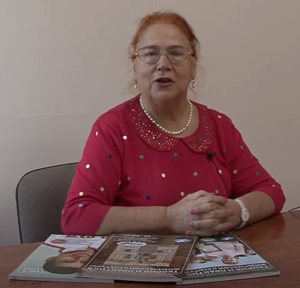"Water life saving" as mean of education and perfection of swimming skills of preschool children (Polish experience)
Фотографии:
ˑ:
"Water life saving" as mean of education and perfection of swimming skills of preschool children (Polish experience)
V.Yu. Davydov, professor, Dr.Biol. Volgograd state academy of physical culture, Volgograd. S. Krawczik, J. Krawczik. Jozef Pilsudski Academy of Physical Education, Warsaw, Poland
Key words: preschool children, teaching swimming, supporting means, sports inventory, exercises in water disciplines, water games.
In Russia Life Saving Society on Water, now Federal Rescue Service, has been responsible for the matters of saving people on water, in Poland these functions are performed by Voluntary water life saving department where internationally certificated rescuers instructors are being trained. Many Russians know the
American film "Baywatch" giving good description of different aspects of rescuers's work and their rescue inventory. Single elements of rescuer training are used at swimming school АWF in Warsaw in teaching of small children who can swim already.
In swimming school АWF in Warsaw swimming classes for 4-6-year-old children have been conducted for 15 years. The program of education is to be realized from January till June with the teachers' load of approximately 30 lessons 45 minutes long once a week, on weekends (classes are not held on holidays and winter and spring school breaks). The swimming course program presupposes theory and practice. Children learn how to swim with their parents.
While performing of the exercises stipulated in the paper children get various applied skills that can be helpful when they grow older. Comprehensive study of swimming skills and abilities promotes opportunities for children to get new skills, abilities and knowledge in life safety. These skills provide for water security of children.
The exercises of the quoted program are considered helpful for other swimming instructors or trainers while teaching life saving. They can be used by other trainers and in other water sports. Swimming instructors and trainers are to popularize swimming and water security of children and gown-ups.
Bibliography
1. Davydov, V.Yu. Swimming in a health camp: guidance / V.Yu. Davydov. – Volgograd, 1995. – 96 P. (In Russian)
2. Davydov, V.Yu. Water security and humane relief service / V.Yu. Davydov. – Мoscow: Sovetsky sport, 2007. – 100 P. (In Russian)
3. Bartkowiak E., Witkowski M. (1986) Nauczanie pływania. Podstawy bezpieczeństwa w wodzie, Młodzieżowa Agencja Wydawnicza, Warszawa.
4. Donelly A. (2003) Gry i zabawy dla najmłodszych. Dla dzieci w wieku 0-4 lat. Wyd. Liber.
5. Krawczyk Z., Czekalska J. (1995) 10-lekcyjny kurs nauki pływania dzieci w wieku 1-3 lat, Kultura Fizyczna nr 3-4.
6. Krawczyk Z., Krawczyk J. Pływanie niemowląt jako forma rekreacji rodzinnej. Praca zbiorowa pod redakcją Dąbrowskiego A.: (2003) Płock. Uczestnictwo Polaków rekreacji ruchowej i jego uwarunkowania. Wyd. AWF i Szkoła Wyższa im. P. Włodkowica w Płocku. Str.405.
7. Krawczyk Z., Krawczyk J. Davydov V. Technique of teaching of infants and children under 4 to swim in Warsaw //Fizicheskaya kultura: vospitanie, obrazovanie, trenirovka. – Мoscow: Teoriya i praktika fizicheskoy kultury i sporta, 2008 . P. 64-70. (In Russian)
8. Nad woda (1995) / Red. Мozer W. – Kajetanów
9. Ostrowski A. (2003) Zabawy i rekreacja w wodzie. WsiP
10. Praca zbiorowa pod red. Sality J. (2000) Rekreacja i fitness w wodzie. Wyd. Olsztyńska Szkoła Wyższa.
11. Vialles C. (2000) 100 zabaw dla dzieci 3-letnich. Wyd Siedmiogród.



